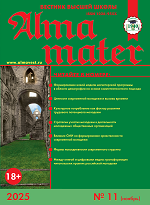UDC 316.6-052
Elnara I. Garayeva, Cand. Sc. (Sociology), Associate Professor of the Department of Personnel Management and Sociology, Ural Institute of Management, RANEPA, e-mail: El.garaeva@bk.ru
This article presents the results of a sociological study using a survey method on the influence of memes on students. 516 full-time students from Ekaterinburg universities took part in the survey; their ages ranged from 18 to 24 years. The reasons for the popularity of memes among students are analyzed. The article characterizes the positive and negative consequences of the influence of memes on the younger generation. Young people are currently actively spending time on social media. This article provides a ranking of the preferences of student youth for the use of social media, which are one of the main platforms for exchanging memes. An important topic raised in the article is cyberbullying. Recommendations are given from respondents that will help minimize destructive content and draw attention to the problem of cyberbullying.
Keywords: VKontakte, Telegram, cyberbullying, Internet bullying, Internet meme, popular social media
Acknowledgments. Research has been carried out with financial support of the Russian Science Foundation No. 22-18-20091, https://rscf.ru/project/22-18-20091/ in Pyatigorsk State University.
References
1. Alekseeva, T.S. Entertainment content as a tool for influencing public opinion. Ideas and innovations. 2022. Vol. 10. No. 3. P. 51–58. DOI: 10.48023/2411‐7943_2022_10_3_51
2. Brodovskaya, E.V., Lifanova, V.A. Political Internet memes as a tool for forming public opinion about political leaders and political parties (using the example of pension reform in Russia). Izvestiia of Tula State University. Humanitarian sciences. 2021. No. 1. P. 3–14.
3. Gedugoshev, R.R., Daurov, A.I. Destructive information in social networks and instant messengers: problems of detection and counteraction. Journal of Applied Research. 2022. Vol. 1. No. 11. P. 92–95.
4. Kanashina, S.V. Internet meme and humor. Questions of journalism, pedagogy and linguistics. 2022. No. 41 (2). P. 319. DOI: 10.52575/2712-7451-2022-41-2-319
5. Kuryacheva, M.M. To the problem of social interaction of youth in social networks. Humanitarian, socio-economic and social sciences. 2018. No. 6. P. 51.
6. Latu, M.N. Content and functional features of polycode texts of conflict orientation. Political linguistics. 2023. No. 6 (102). P. 166.
7. Matveeva, S.Yu. Memes as a factor in uniting a social group. Polytechnic youth magazine. 2021. No. 12 (65). http://dx.doi.org/10.18698/2541-8009-2021-12-758
8. Machueva, O. VK holds the Day against Cyberbullying for the fifth time. URL: https://searchengines.guru/ru/news/2057948 (accessed on: 13.05.2024).
9. Savitskaya, T.E. Internet memes as a phenomenon of mass culture. Culture in the modern world. 2013. No. 3. P. 3–11.
10. Skorobogatov, V.V., Sukhareva, E.S. Internet meme as a mechanism for forming public opinion about political phenomena. Society: politics, economics, law. 2021. No. 6. P. 26–30. https://doi.org/10.24158/pep.2021.6.2.
11. Soboleva, E.D. Internet memes in youth communication. Science leader. 2023. No. 16 (114). URL: https://scilead.ru/article/4311-internet-memi-v-kommunikatsii-molodezhi (accessed on: 15.05.2024).
12. Technologies against bullying in social networks: how VKontakte and OK fight cyberbullying. URL: https://hi-tech.mail.ru/review/104000-tekhnologii-protiv-travli-v-socset... (accessed on: 15.05.2024).











.png)






